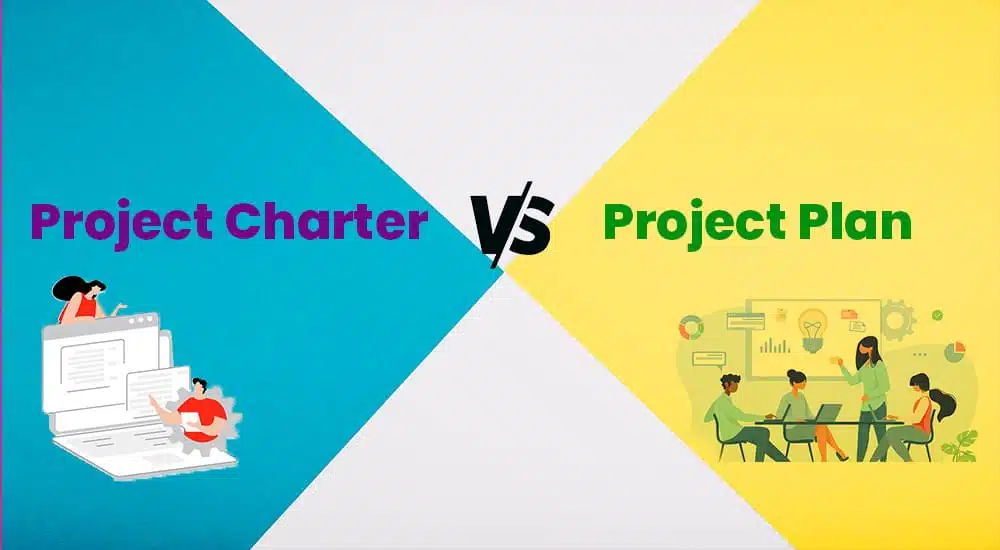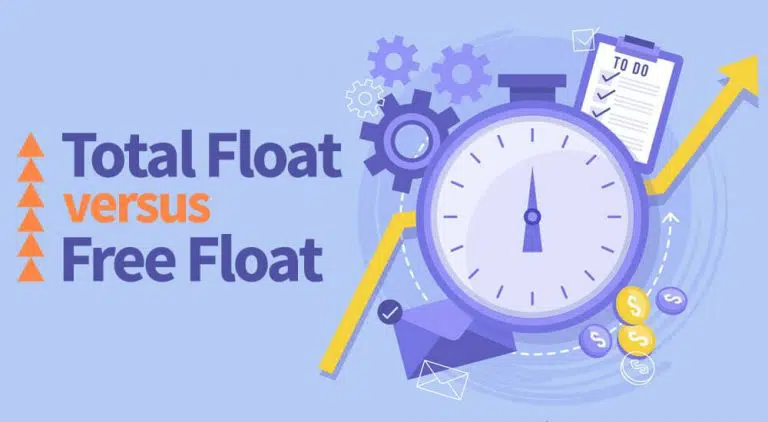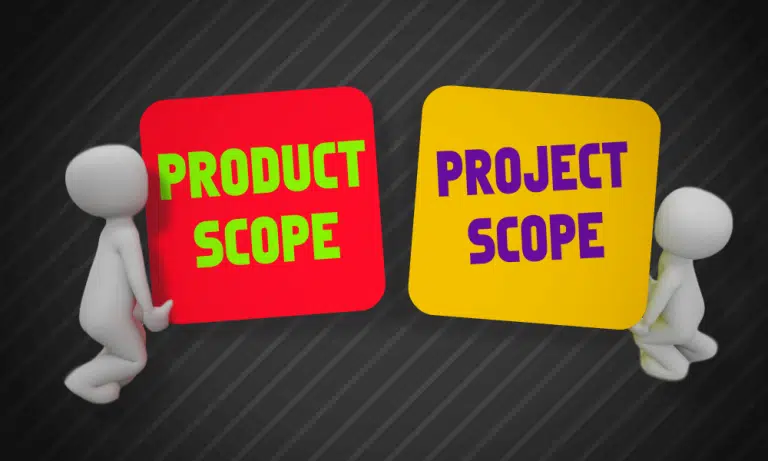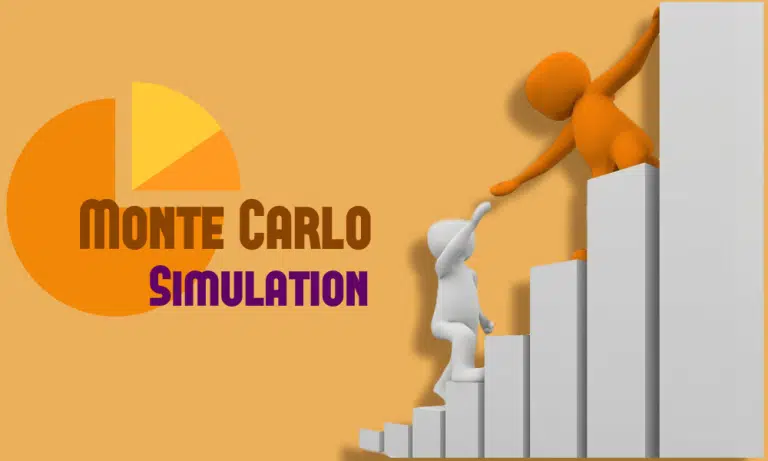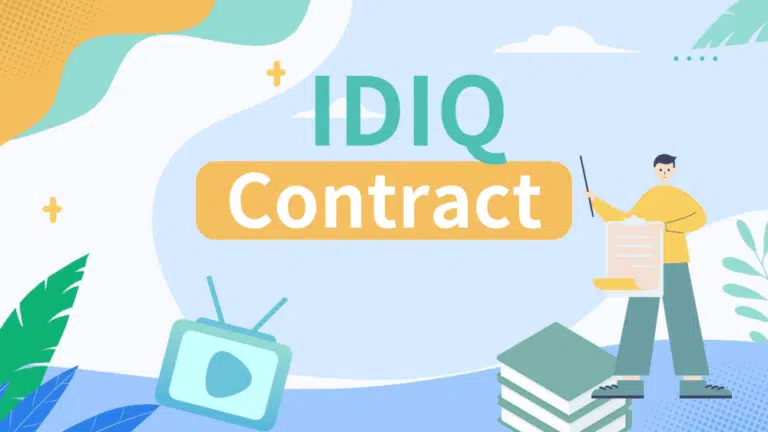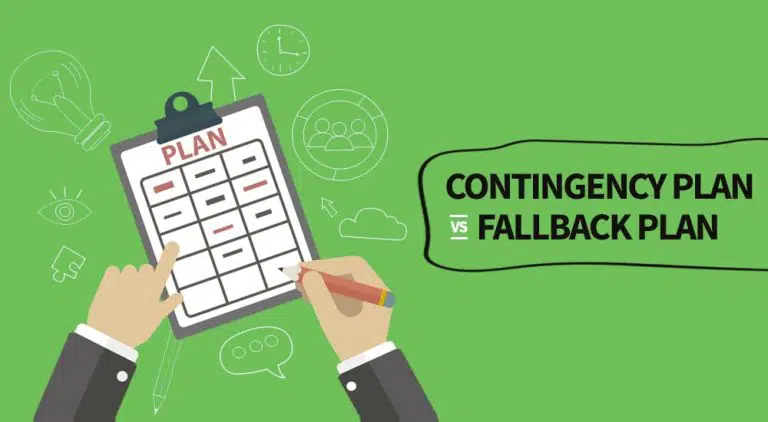The project charter and the project plan are vital documents in project management. These project documents have different purposes and address different aspects of a project life cycle.
This article will provide the difference between a project charter vs project plan, including an understanding of their roles, contents, and significance in project management.
By exploring the differences between these documents, you can gain valuable insights into when and how to leverage them effectively.
Project Charter Vs Project Plan
Let’s start with the project charter.
Project Charter
A project charter officially starts the project and establishes the foundation for its success. It is a crucial project artifact that outlines the vision, objectives, stakeholders, scope, major risks, high-level assumptions, constraints, etc.
This document appoints the project manager, gives him authority, and assigns resources to complete the project.
A project charter is a brief document, sometimes known as a project definition document.
The project sponsor or someone from the top manager develops the project charter. It acts as a project blueprint, guiding project managers and team members toward a common understanding of its purpose and direction.
A project charter declares the intent, providing a concise and clear statement of the project’s goals and desired outcomes. It outlines the project’s scope and boundaries, setting expectations and aligning stakeholders’ understanding of what will be delivered.
By defining the project’s objectives and baselines, the charter serves as a touchstone against which project progress can be measured.
The project charter fosters effective stakeholder engagement and enhances project governance by establishing logical lines of communication and collaboration.
The project charter lists the key risks, assumptions, and constraints.
It secures project sponsorship and gains organizational buy-in.
Functions of the Project Charter
The key functions of the project charter are as follows:
- Authorization: The project charter authorizes the existence of the project.
- Appoint Project Manager: The project charter appoints the project manager.
- Defines Project Objectives: It defines the project objectives.
- Identify Key Stakeholders: The project charter identifies key stakeholders and their roles, responsibilities, and interests.
- Scope Management: The charter outlines the boundaries and specifies what is included and excluded from the project. It helps prevent scope creep.
- Project Planning: The charter provides a foundation for project planning activities.
- Communication and Reporting: The project charter outlines how project information will be shared, who will be involved, and the frequency and methods of communication.
- Baseline Document: The charter serves as a baseline reference document for the project. It provides a starting point against which project progress, performance, and deviations can be measured and evaluated.
- Project Governance: The charter helps establish the governance structure for the project, defining the roles and responsibilities of project stakeholders and their involvement in the project, decision-making, and control.
Key Component of Project Charter
The components of the project charter are as follows:
- Project Title: A concise and descriptive name for the project.
- Project Purpose or Justification: The rationale for undertaking the project and the desired outcomes.
- Project Objectives: Clear, measurable, and specific goals the project intends to accomplish.
- Business Case: The project includes the business case that justifies the project.
- Project Scope: The project’s boundaries, including what is included and excluded.
- Stakeholders: It provides key internal and external stakeholders.
- Project Manager and Team: It includes the project manager’s name and contact details, key project team members, and their respective roles and responsibilities.
- Assumptions and Constraints: The assumptions and constraints that may impact the project’s execution or success.
- Project Deliverables: The tangible outputs or outcomes that the project will produce, along with their associated criteria for acceptance.
- Milestones and Timeline: Major project milestones, timelines including key dates, and a high-level project timeline.
- Budget and Resources: The project’s estimated budget includes funding sources and the key resources required.
- Risks and Dependencies: It identifies key project management dependencies and major risks.
- Communication Plan: An outline of how project information will be communicated, including the frequency, methods, and stakeholders involved.
- Approval and Signatures: The names and signatures of the individuals or stakeholders who authorize the project charter and commit their support to the project.
Project Plan
A project plan or project management plan guides the execution of a project from start to finish. It is a dynamic document that includes the tasks, project timelines, resources, task dependencies, etc. The project plan provides team members with a structured approach to managing and tracking project progress.
A project plan is sometimes also known as a work plan.
The project plan takes the high-level project goals and objectives from the project charter and breaks them into actionable steps. It identifies the tasks that must be completed, assigns responsibilities, and establishes deadlines. The project plan lets project managers monitor progress, identify bottlenecks, and take necessary corrective actions to keep the project on track.
A key aspect of the project management plan is resource allocation. It identifies the specific resources, both human and material, required for each task. Project managers can ensure that the skills, expertise, and tools are available at the right time by accurately estimating resources.
Effective resource allocation minimizes delays and maximizes productivity, allowing teams to work efficiently towards project milestones.
The project plan is a living document that evolves and adapts to changing circumstances. It allows project managers to make informed decisions, adjust timelines, reallocate resources, and revise strategies as necessary.
The project plan provides guidance and structure to the project team, ensuring everyone remains focused on the goal.
The Function of Project Plan
The functions of a project plan are as follows:
- Roadmap and Guidance: The project plan provides a roadmap that outlines the sequence of activities, tasks, and milestones required to achieve the project objectives.
- Scope Management: The project plan defines its scope, including its deliverables, boundaries, and exclusions.
- Resource Allocation: The project plan identifies the resources such as personnel, equipment, materials, and budget required for each activity.
- Time Management: The project plan includes a detailed timeline or schedule that specifies each activity’s start and end dates and important milestones.
- Risk Management: The project plan identifies potential risks and includes response strategies to address them.
- Communication and Collaboration: The project plan includes a communication plan that outlines how project information will be shared among stakeholders.
- Quality Management: The project plan defines the quality standards and requirements that need to be met for project deliverables.
- Cost Management: The project plan includes a budget that outlines the estimated costs for each activity and the overall project.
- Performance Measurement: The project plan defines key performance indicators (KPIs) and metrics that will be used to measure project progress and success.
- Change Management: The project plan includes processes and procedures for managing changes to the project scope, schedule, resources, or other aspects.
- Documentation: The project plan serves as a comprehensive project documentation, capturing key information such as project objectives, scope, timelines, resources, and risks.
Key Component of Project Plan
Key components of the project plan are as follows:
- Project Overview: A project summary, including its objectives, scope, and deliverables.
- Project Objectives: Clear, measurable, and specific goals the project intends to achieve.
- Scope Definition: A detailed description of the project’s boundaries, deliverables, and what is included and excluded from the project.
- Project Organization: The roles and responsibilities of the project team members, stakeholders, and any external parties involved.
- Work Breakdown Structure (WBS): A WBS is a hierarchical breakdown of the project’s tasks and activities, organized into manageable work packages.
- Schedule: A detailed timeline or schedule that outlines when each task or activity is planned to start and finish, including milestones and dependencies.
- Baselines: The project charter includes cost, schedule, and scope baseline against which the project progress is measured and evaluated.
- Resource Allocation: Identification of the resources (e.g., personnel, equipment, materials) and their allocation to specific tasks or activities.
- Budget: A breakdown of the estimated costs associated with the project, including labor, materials, equipment, and any other relevant expenses.
- Subsidiary Project Plans: The project plan include subsidiary project plans such as risk management plan, quality management plan, communication management plan, etc.
- Change Management: It includes a change management plan. It has procedures for managing and documenting changes to the project scope, schedule, resources, or other aspects of the project.
- Monitoring and Control: Processes and techniques for monitoring project progress, tracking performance, and ensuring adherence to the plan.
- Documentation: The project plan should accompany any relevant supporting documents, such as technical specifications, contracts, or legal agreements.
Difference Between Project Charter and Project Plan
The project charter is a strategic document that initiates a project, appoints a project manager, and gives him authority to manage and complete the project. It outlines the project’s purpose, objectives, stakeholders, and high-level scope.
The project charter sets the stage by defining the vision, aligning stakeholders’ understanding, and securing their commitment to support the project.
On the other hand, the project plan focuses on the tactical aspects of project execution. This comprehensive document translates the project charter into actionable steps and specific tasks. The project management plan outlines the detailed activities, timelines, resources, and dependencies required to accomplish the project’s objectives.
It serves as a roadmap, guiding the project team’s day-to-day work, monitoring progress, and ensuring tasks are completed on time and within budget.
While the project charter provides the “what” and the “why” of a project, the project plan provides the “how.” The project charter sets the direction, while the project plan charts the course and provides guidance to navigate the complexities of project execution.
The project charter focuses on establishing a shared understanding and securing commitment, while the project plan focuses on implementing and managing the project’s activities.
Another difference lies in the level of detail and scope coverage. The project charter provides a broad overview of the project’s scope, key deliverables, and key stakeholders. It sets the boundaries and direction for the project. In contrast, the project plan delves deeper into the specifics, breaking the work into tasks, estimating resources, defining timelines, and identifying dependencies.
The project plan provides a granular view of how the project will be executed and controlled.
The project charter targets high level stakeholders, executives, and project sponsors. It communicates the project’s strategic importance, benefits, and alignment with organizational goals.
The project plan is intended for the project team, including project managers, team members, and stakeholders involved in project execution. It provides detailed instructions, timelines, and resource allocations for successful project implementation.
Summary
The project charter and the project plan serve different purposes and cater to different needs in project management. The project charter establishes the project’s vision, objectives, and stakeholders, while the project plan outlines the detailed tasks, timelines, resources, and dependencies necessary to execute the project.
These topics are important from a PMP exam point of view. Understand them well.

I am Mohammad Fahad Usmani, B.E. PMP, PMI-RMP. I have been blogging on project management topics since 2011. To date, thousands of professionals have passed the PMP exam using my resources.

